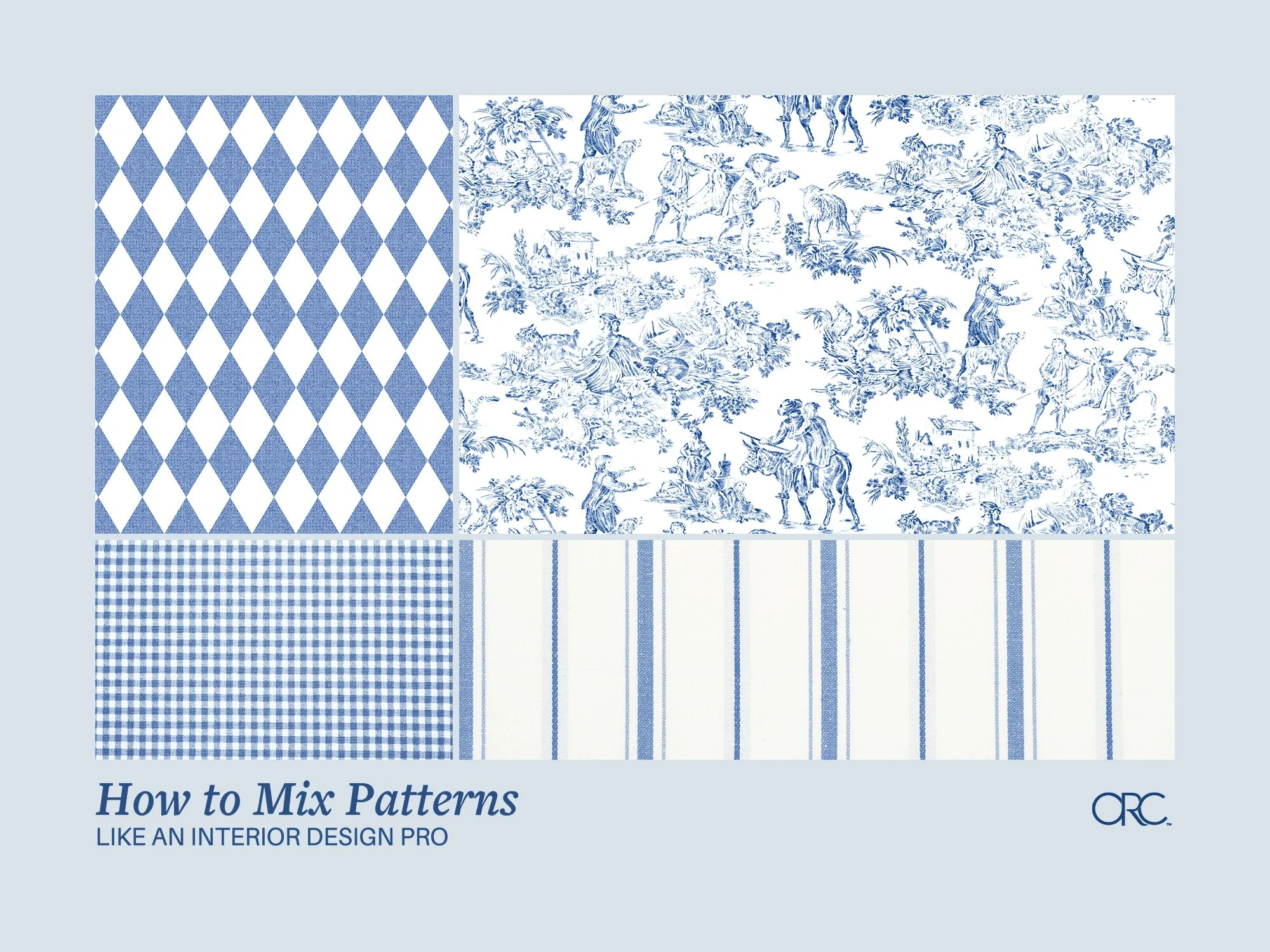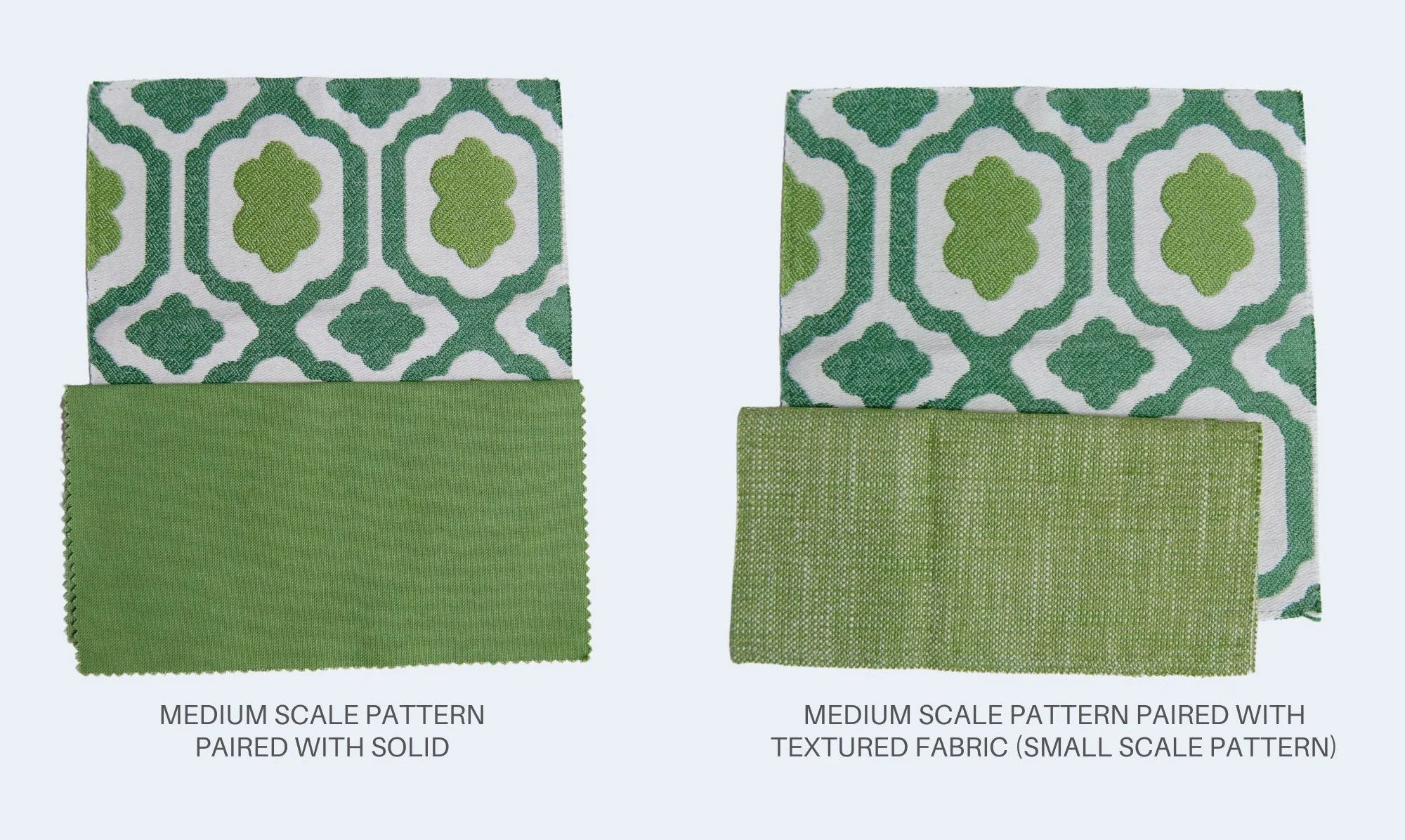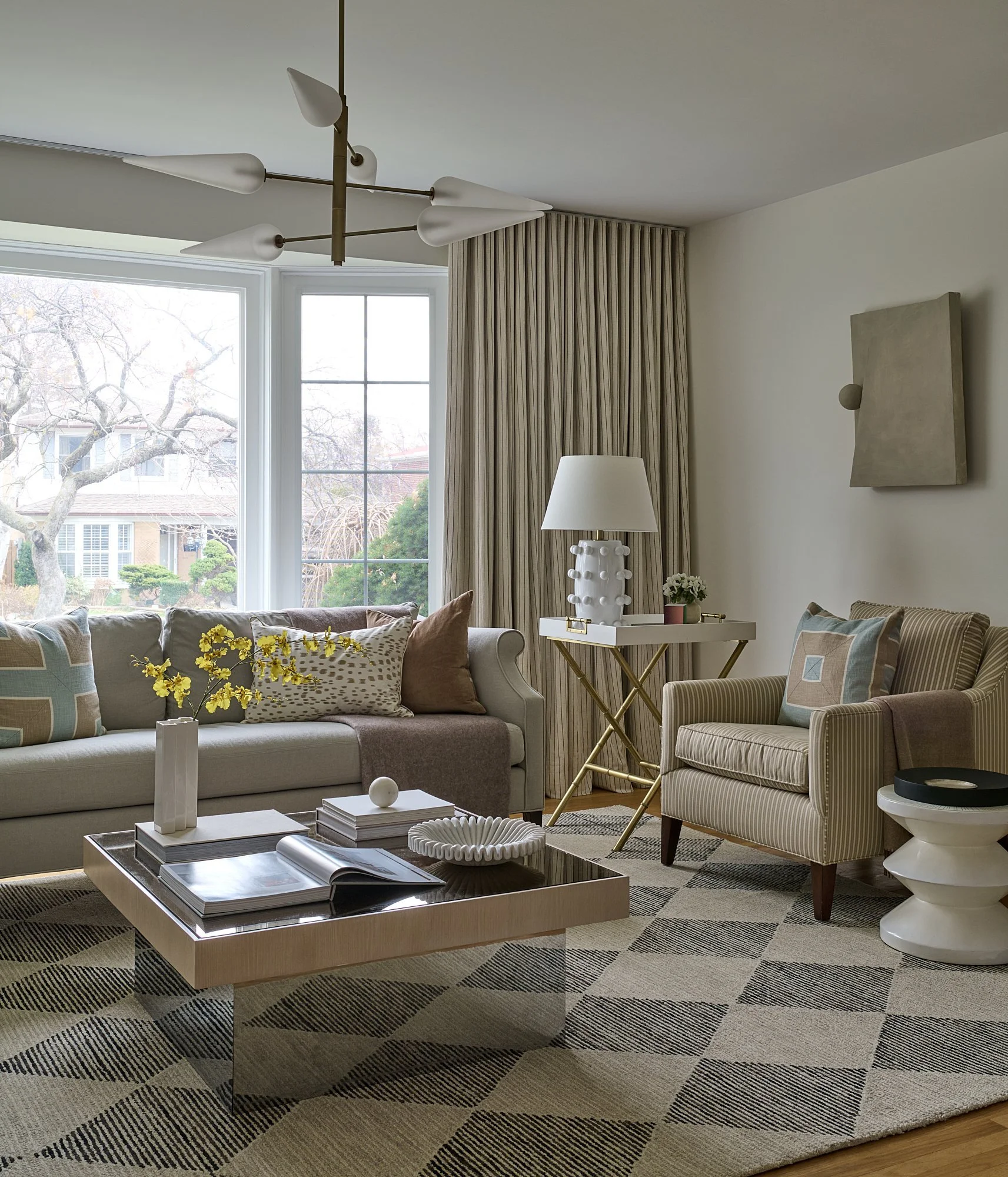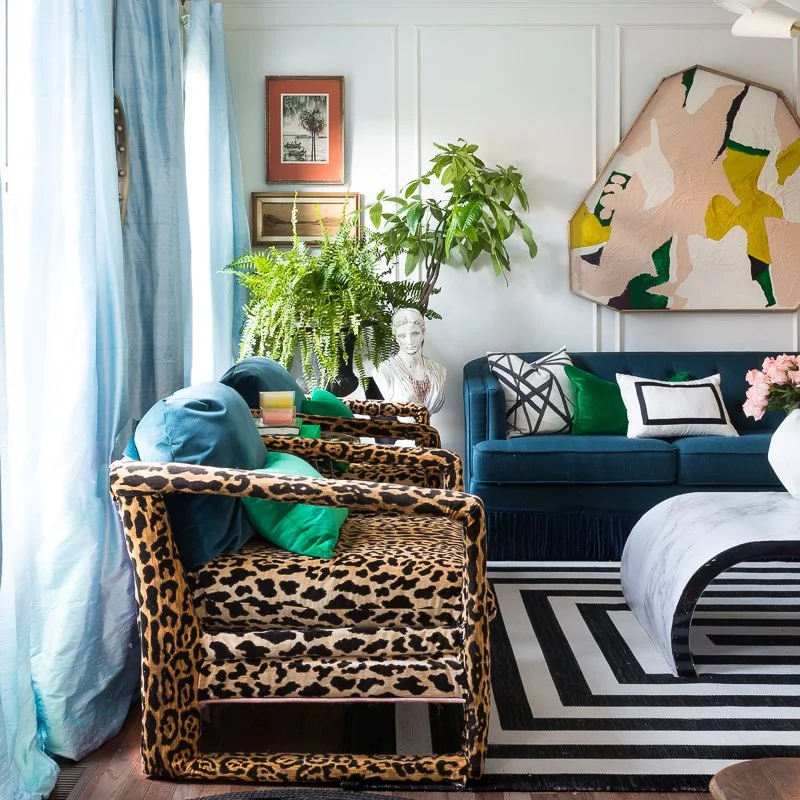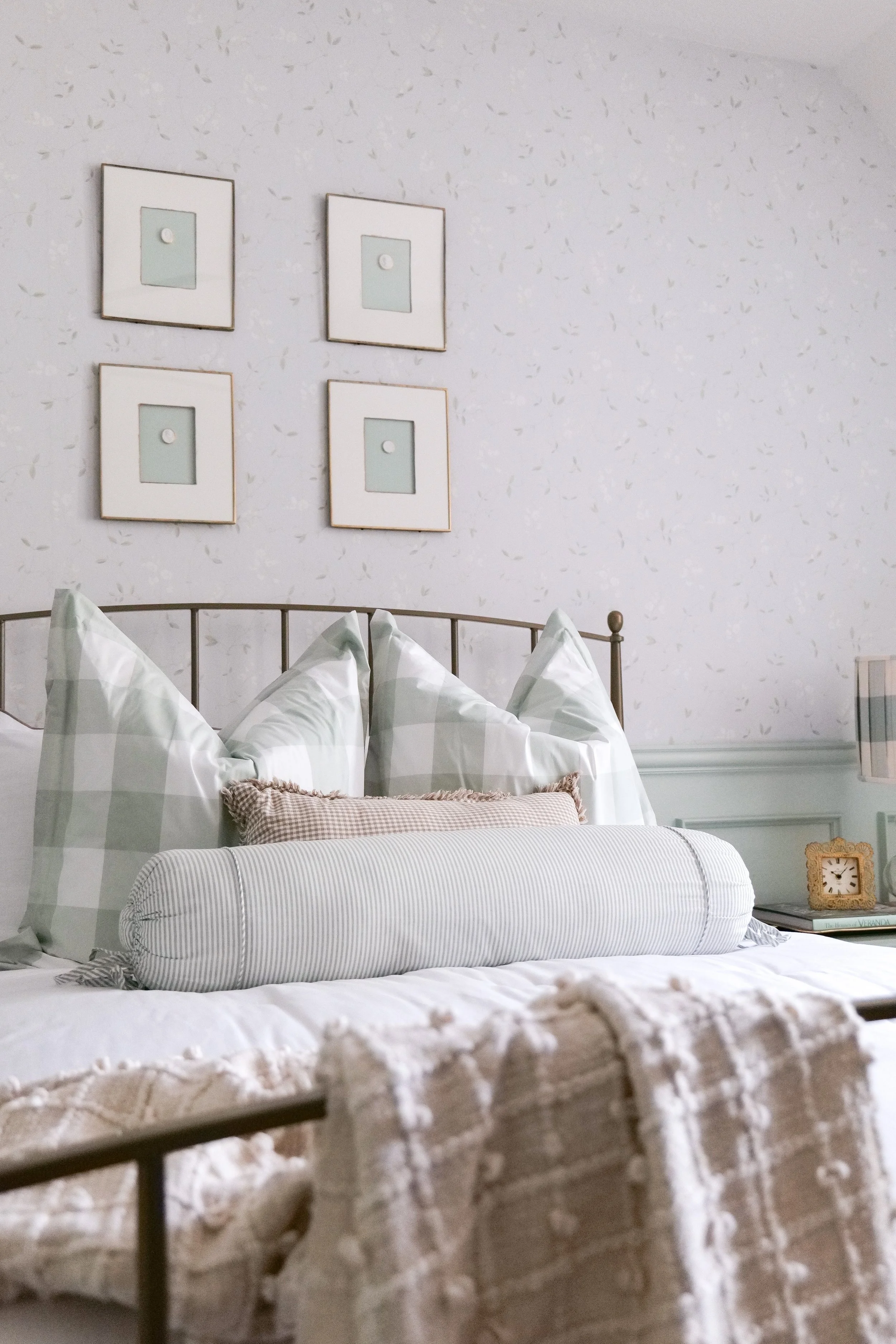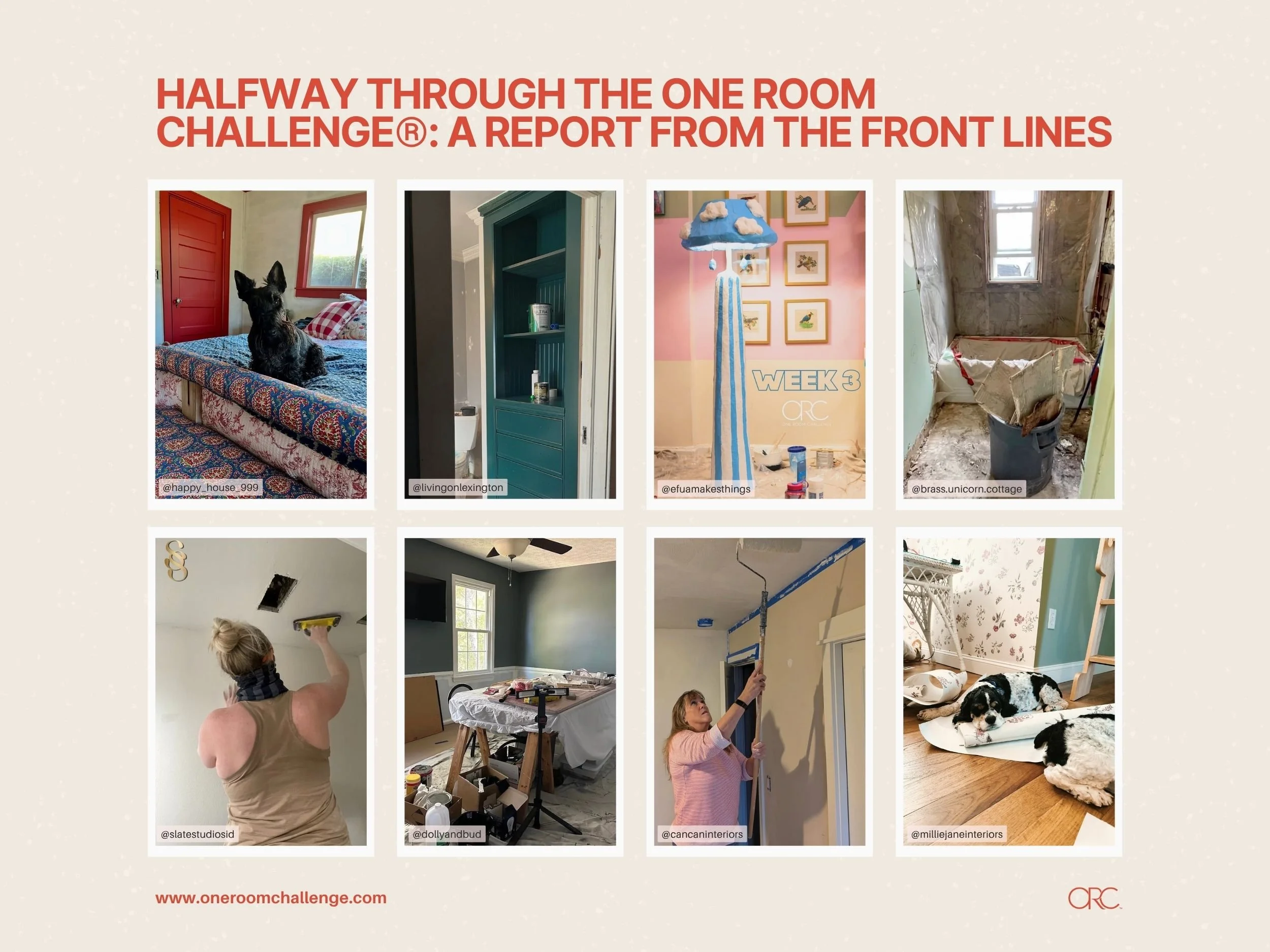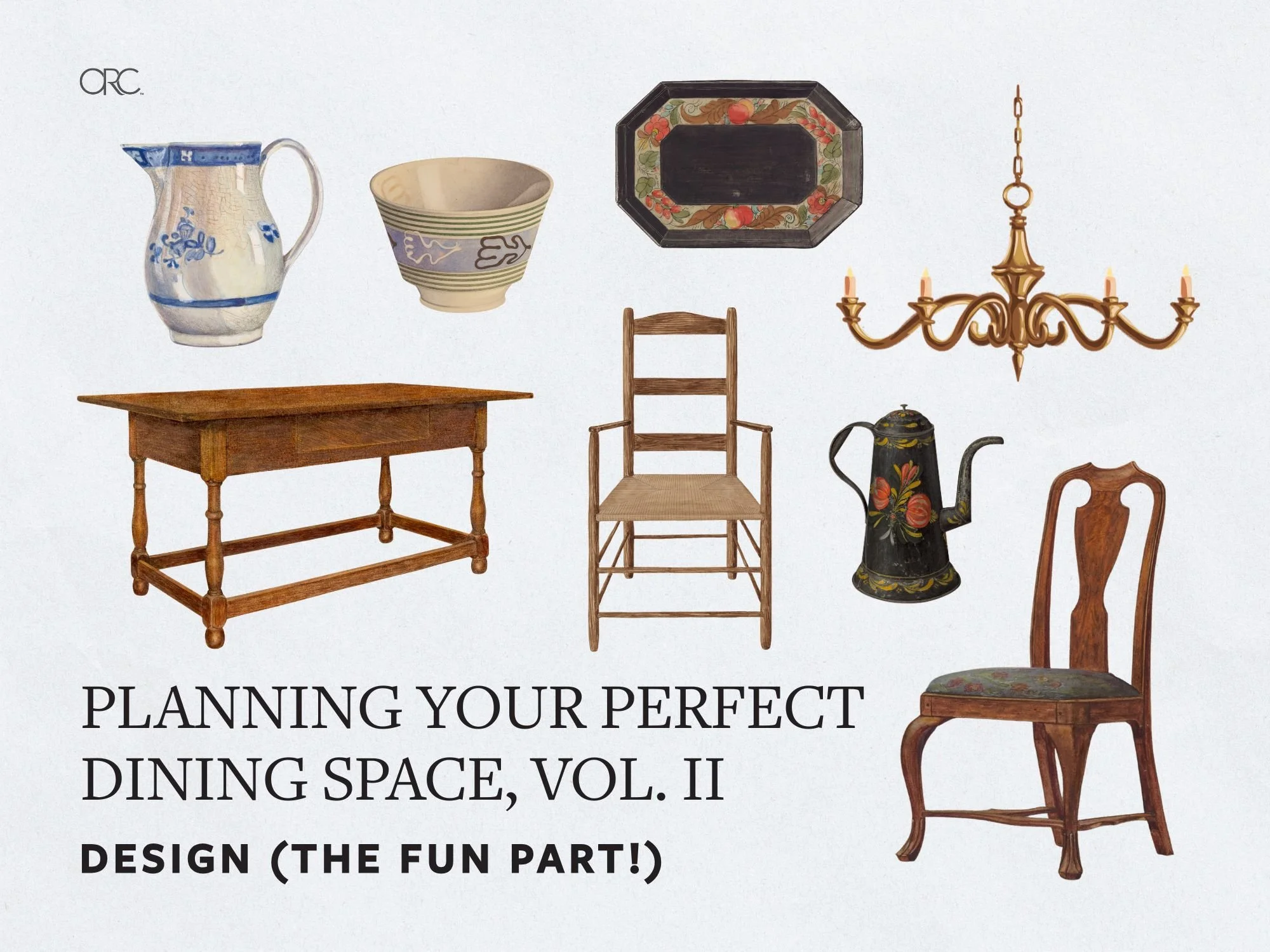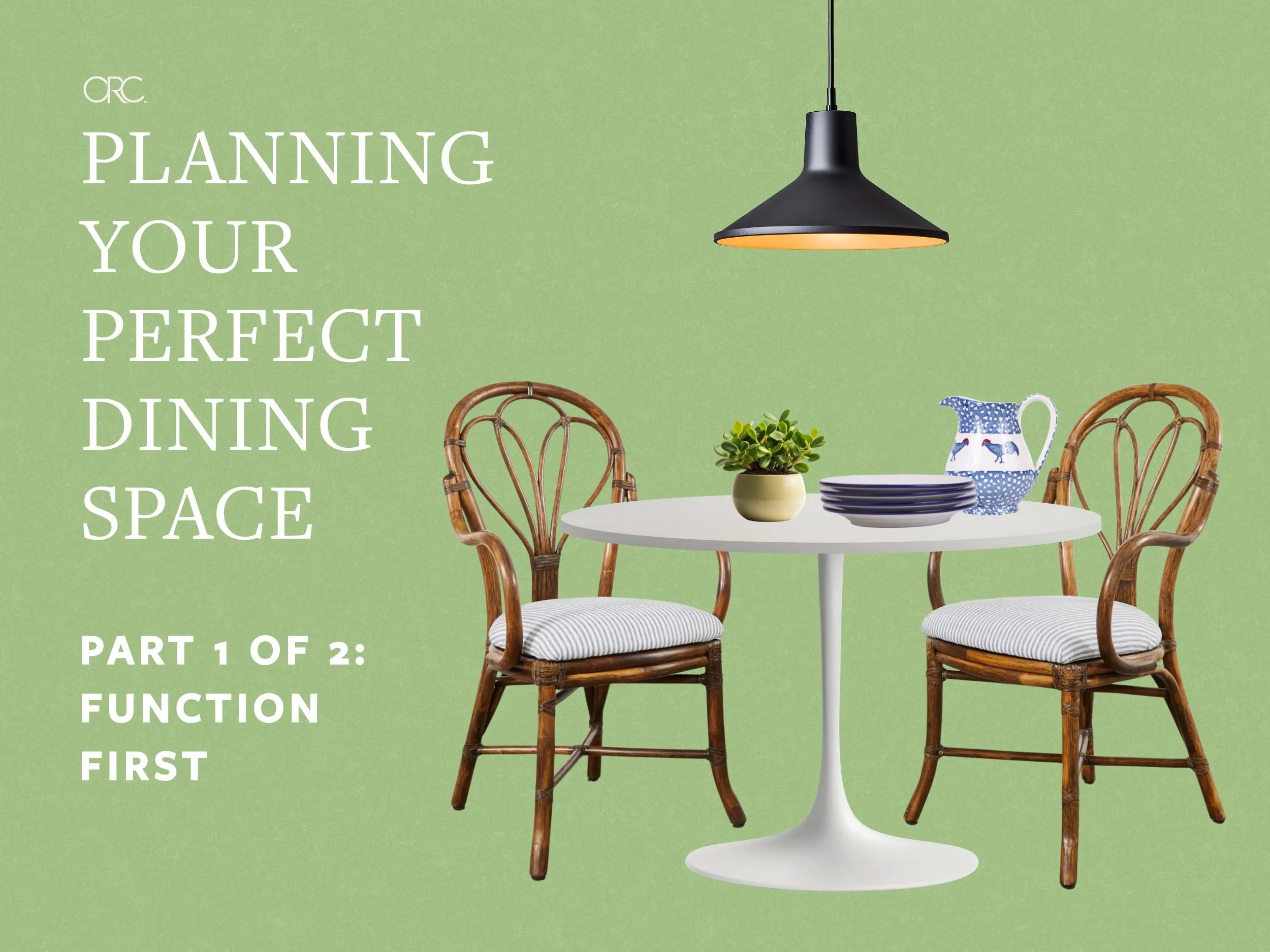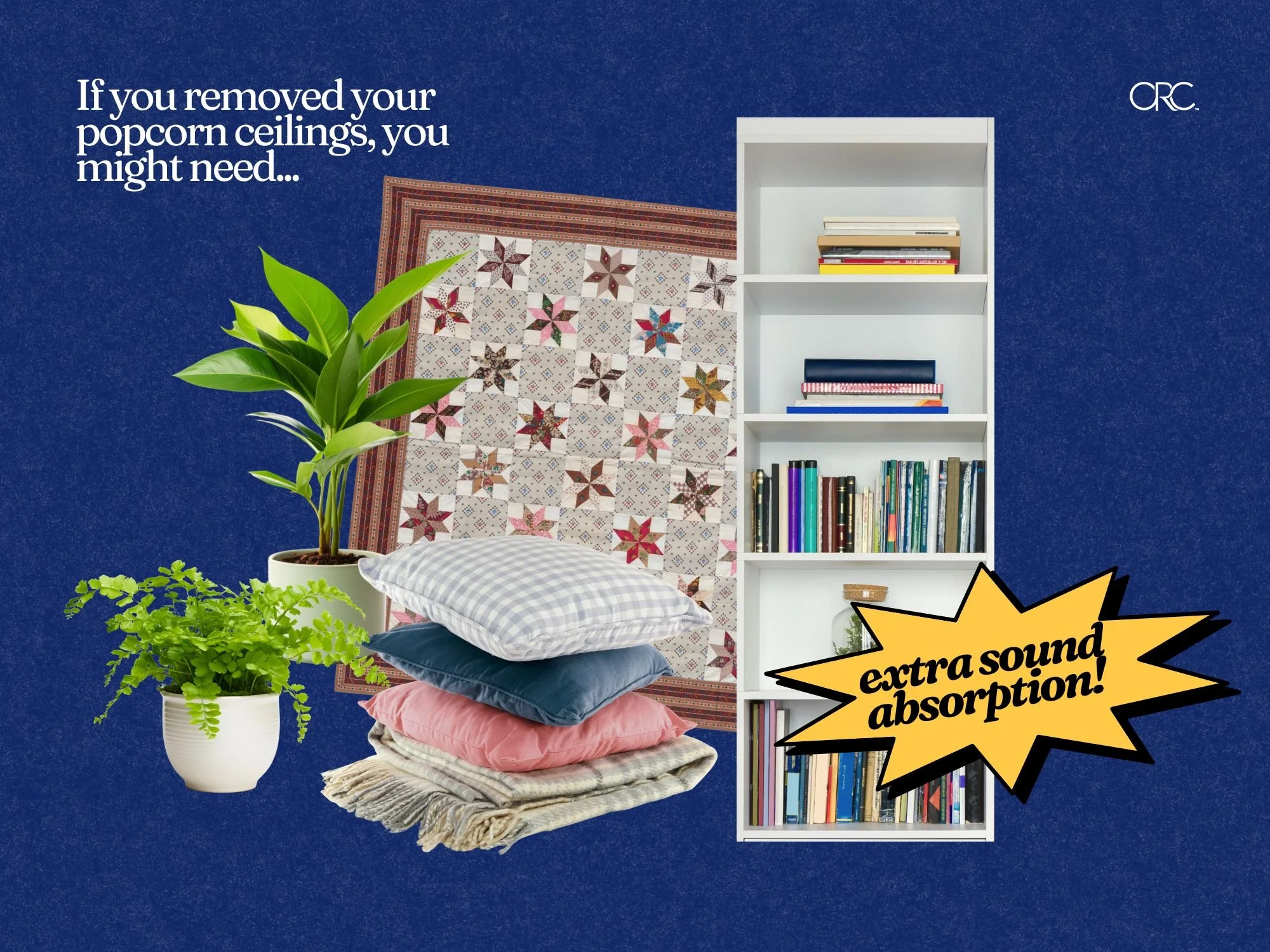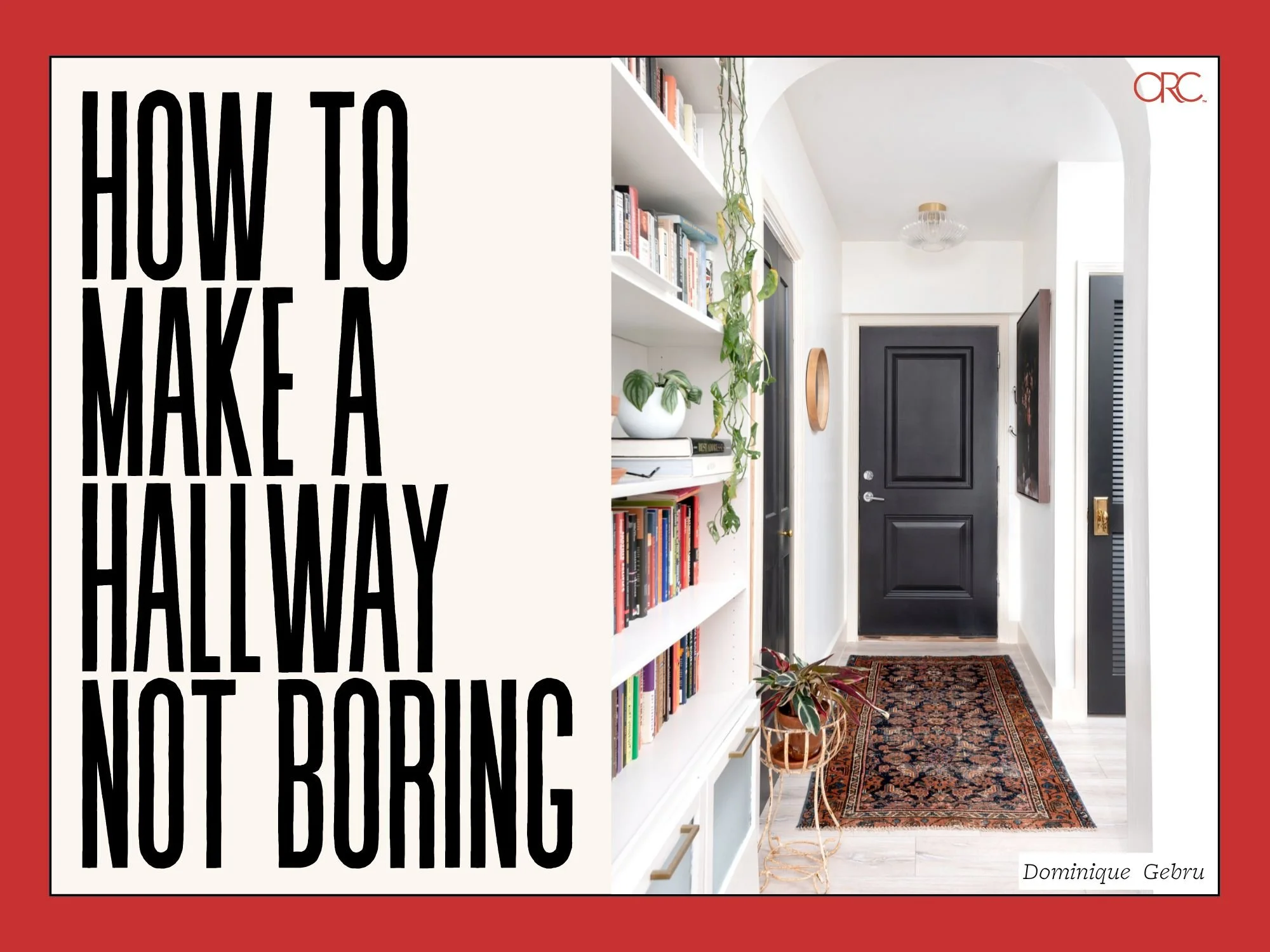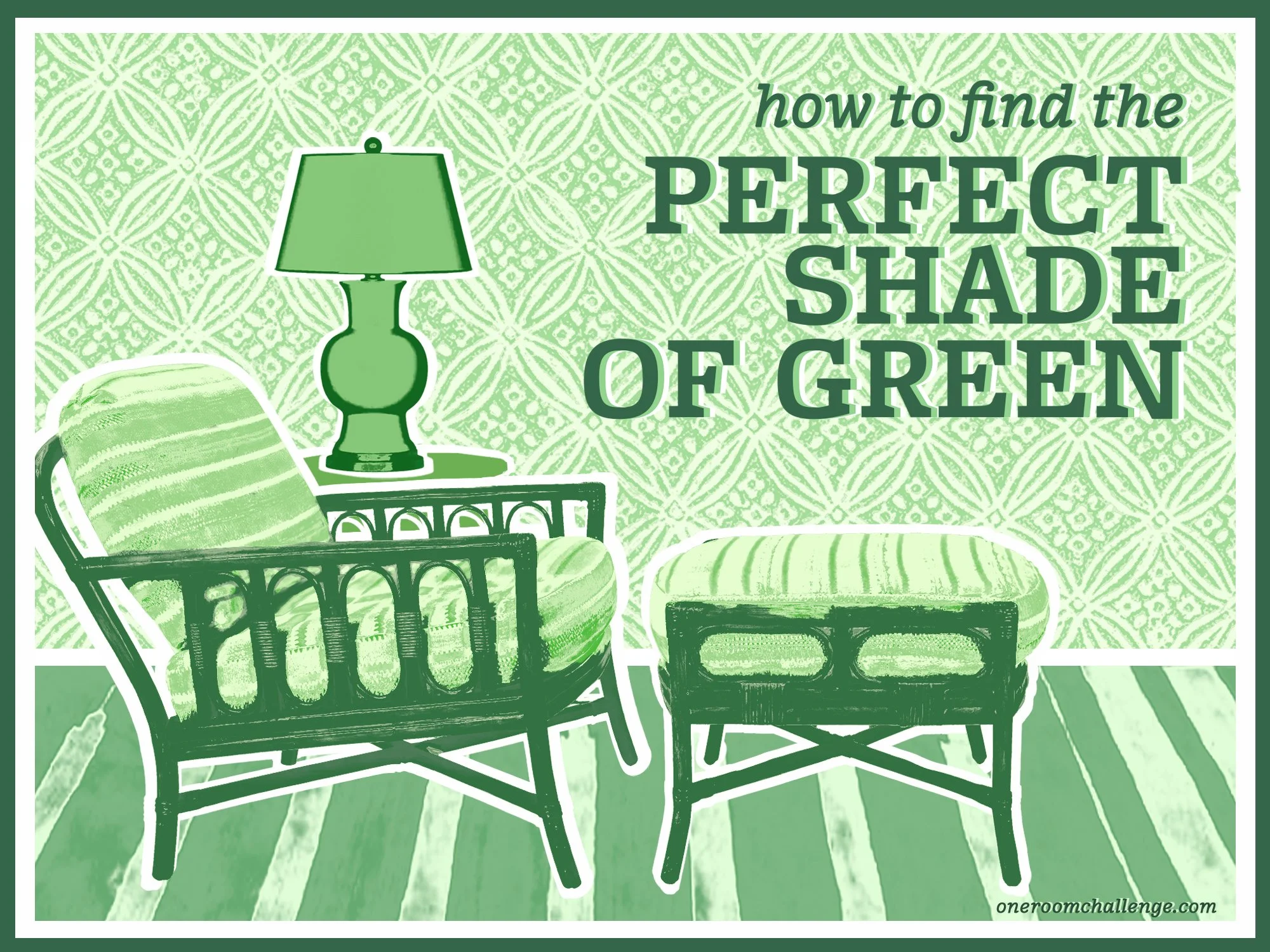How to Mix Patterns Like an Interior Design Pro
DESIGN
STORY BY VIRGINIA BESHEARS
It’s not just wallpaper and textiles—pattern is absolutely everywhere. Materials like wood and marble technically have a pattern, so even the most devout minimalist still has to balance and mix patterns in their home.
Mixing multiple patterns within one room seems quite daunting, but really comes down to a handful of design principles that are very easy to learn. In fact, you more than likely already know them on a subconscious level. Knowing the basics of pattern mixing makes adding visual interest to any space a breeze.
VIA @MASHOUSE2021
Rule #1: Contrasting Scale
The first rule of pattern mixing club is to create balance by pairing contrasting scales. Pairing large-scale patterns with small-scale ones prevents the design from becoming too busy or chaotic. Scale examples above are courtesy of my mom’s fabric sample stash.
Also, be careful with the ratio/proportion of small and large scale patterns. Your goal isn’t to get 50% large scale and 50% small scale. If your dominant large-scale pattern is on a large piece of furniture, use small-scale patterns more sparingly. Conversely, if the large-scale pattern is on a smaller item, you can use more small-scale patterns around the room.
One easy trick is to imagine your room is a pie chart with three chunks (one being solids, one being large scale patterns, and one being small scale patterns), and try using the classic 60/30/10 ratio. If you prefer a visually clean look, maybe aim for 60% solids, 30% small scale patterns/texture, and 10% large scale patterns, like a pop of a bold geometric.
VIA @HOMEONHARBOR
Rule #2: Contrasting Theme
You also should create balance by contrasting pattern types/themes. For example, if your main pattern has a lot of straight lines, offset that by pairing it with something more organic. Variety in pattern types keeps the design dynamic and engaging. This one is tough for me, I’ve had to unlearn my impulse to buy everything in stripes.
In the example above, the medium scale pattern doesn’t look better paired with the solid fabric or with the woven/texture fabric. Next to the solid fabric, though, you can see how the textured fabric reads like a small scale pattern, since it’s creating visual noise. If your room is looking too flat but your style is more minimal/neutral, keep in mind that a fabric with any kind of visible weave or variation in color can totally be used as your small scale pattern. Conversely, if you’re going bold and you want a particular pattern to really pop, try surrounding it with solids.
VIA DESIGN MAZE
Rule #3: Use a Unifying Color
After all that contrasting, it’s time to get unifying. While the colors in your selected patterns certainly don’t need to match, it looks nice to create a common thread so they look cohesive and related. For example, if you love one fabric that only comes in blue and another that only comes in green, try to find a third that has both blue and green to tie them all together.
Rule #4: there are no rules
Interior design is subjective! While guidelines are helpful, personal taste is paramount. Always trust your instincts and create a space that feels right to you.
Like I said earlier, you probably already know these design principles on a subconscious level, but hopefully having this info in your back pocket will make design a little more approachable. Happy decorating :)

